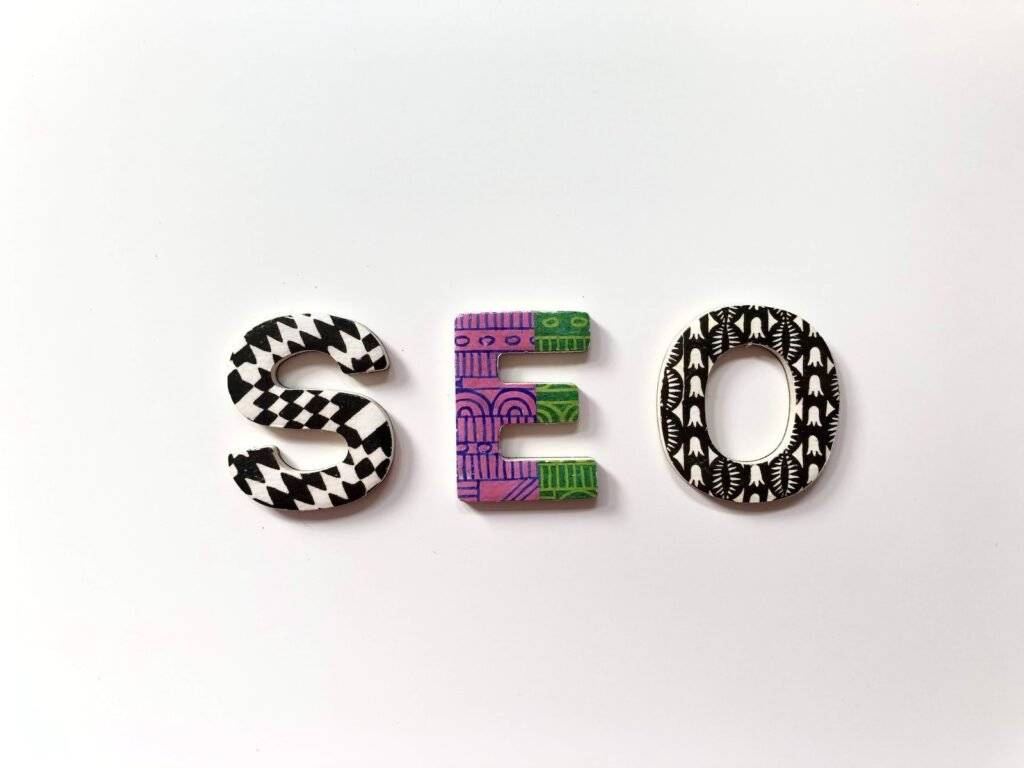The Importance of Image Optimization for SEO
Image optimization is a crucial aspect of search engine optimization (SEO), as it plays a significant role in enhancing the visibility and performance of a website. Images not only make a webpage visually appealing but also engage users and convey important information. However, search engines cannot interpret images in the same way humans do.
They rely on text-based information to understand the content of images. This is where image optimization comes into play. By optimizing images with relevant keywords, alt text, file names, and captions, website owners can provide search engines with valuable information about their visual content, making it easier for search engines to index and rank these images accordingly.
In addition to improving the user experience and search engine visibility, image optimization also has a positive impact on website performance. Optimized images are lightweight and load faster, which is crucial for overall site speed. Research has shown that slow-loading websites tend to have higher bounce rates and lower conversion rates, negatively affecting user experience and SEO.
By compressing images and choosing the appropriate file format, website owners can reduce the size of images without compromising their quality, resulting in faster page load times and better overall performance. So, if you want to enhance your website’s SEO and improve its performance, image optimization is a fundamental strategy that you should prioritize.
Understanding the Role of Keywords in Image SEO
Keywords play a crucial role in image SEO, as they help search engines understand the content and context of an image. When search engine bots crawl a webpage, they rely on textual information, such as alt text, file names, captions, and surrounding text, to determine what the image is about. By strategically incorporating relevant keywords into these elements, website owners can enhance their image SEO and improve their chances of ranking higher in search engine results.
One primary consideration when using keywords for image optimization is relevance. It’s important to choose keywords that accurately describe the image and align with the overall content of the webpage. The keywords should be semantically related to the topic at hand and provide a clear indication of what the image represents. By selecting appropriate keywords, website owners can improve the visibility of their images in search results and attract targeted organic traffic to their site.
Identifying the Right Keywords for Image Optimization
Identifying the right keywords for image optimization is an essential aspect of ensuring that your images are easily discoverable by search engines. When selecting keywords for image optimization, it is crucial to consider relevance and search volume. Relevance refers to choosing keywords that accurately describe the content of your image, while search volume reflects the number of people searching for those keywords.
To begin identifying keywords, it is recommended to conduct thorough keyword research using tools like Google Keyword Planner or SEMrush. These tools provide valuable insights into the search volume and competition for specific keywords. Additionally, consider using long-tail keywords, which are more specific and can help target a specific audience.
Once you have a list of potential keywords, evaluate their relevance to your image and choose the most appropriate ones. It is important to strike a balance between optimizing your image for search engines and ensuring it remains relevant and valuable to your audience. By selecting the right keywords, you can optimize your images for improved search visibility and attract more relevant traffic to your website.
Conducting Keyword Research for Image SEO
Keyword research is a crucial step in optimizing images for SEO. By identifying the right keywords, you can ensure that your images are relevant to the content they are associated with, improving their visibility in search engine results. When conducting keyword research for image SEO, it is important to consider the context in which the images will be used.
Are they being displayed on a website, in a blog post, or within an online store? Understanding the purpose and target audience of the images will help you select keywords that align with the overall content and optimize them effectively.
In addition to considering the context, it is important to utilize long-tail keywords for image optimization. Long-tail keywords are more specific phrases that typically have lower search volumes but are highly relevant to a particular topic.
By incorporating long-tail keywords into your image optimization strategy, you can target a more niche audience, increase the chances of your images being found by users who are specifically searching for those topics, and potentially achieve higher rankings in search engine results. When conducting keyword research, make sure to include a mix of both short-tail and long-tail keywords to optimize your images effectively.
Leveraging Long-Tail Keywords for Image Optimization
Long-tail keywords play a crucial role in optimizing images for search engine optimization (SEO). Unlike generic keywords, long-tail keywords are more specific and target niche audiences. When it comes to image optimization, leveraging long-tail keywords can greatly enhance visibility and improve search rankings.
To begin leveraging long-tail keywords for image optimization, it is essential to conduct thorough keyword research. Identify keywords that are highly relevant to your image content, but also less competitive. By focusing on these specific and targeted keywords, you increase the chances of your image being discovered by users who are actively searching for that specific content.
Incorporating long-tail keywords into your image file names, alt text, captions, and metadata can significantly boost your image’s SEO performance and improve its chances of ranking higher in search engine results.
Remember, the key is to strike a balance between relevance and competition. While generic keywords may drive more traffic, long-tail keywords can help you reach your target audience more effectively. So, take the time to identify and leverage relevant long-tail keywords for your image optimization strategy, and watch as your images gain better search visibility and attract the right audience.
Utilizing Image File Names for SEO Benefits
Image file names play a crucial role in optimizing images for search engine optimization (SEO) benefits. When naming your image files, it is essential to choose descriptive and relevant names that accurately represent the content of the image. By doing so, search engines can understand what the image is about and index it accordingly.
For instance, instead of using generic names like “IMG12345.jpg,” it is advisable to use descriptive names like “red-rose-bouquet.jpg.” This not only enhances the user experience but also helps search engines associate the image with relevant keywords. It is important to note that search engine algorithms consider various factors, including image file names, when determining the relevance and visibility of images in search results.
By utilizing optimized image file names, you can improve your chances of ranking higher in image search results and attracting more organic traffic to your website.
Optimizing Alt Text for Improved Image SEO

When it comes to optimizing alt text for improved image SEO, there are several key considerations to keep in mind. Alt text, or alternative text, is the descriptive text that is associated with an image and is displayed when the image cannot be loaded or viewed by the user. By optimizing alt text, you can not only improve the accessibility of your website for visually impaired users but also enhance its visibility in search engine results.
To optimize alt text for improved image SEO, it’s essential to provide a concise and accurate description of the image while incorporating relevant keywords. This helps search engines understand the context and content of your images, making them more likely to appear in image searches.
However, it’s important to strike a balance between using keywords and providing meaningful descriptions. Avoid keyword stuffing or using generic alt text that does not accurately depict the image. Additionally, keep in mind that alt text should be no longer than 125 characters to ensure optimal readability and effectiveness.
Incorporating Keywords into Image Captions
Image captions play a vital role in optimizing images for search engine optimization (SEO). Not only do captions provide contextual information for users, but they also offer an opportunity to incorporate relevant keywords.
When writing image captions, it is important to strike a balance between descriptive and keyword-rich content. Avoid stuffing captions with excessive keywords, as this can appear unnatural and spammy. Instead, focus on creating captions that accurately describe the image while seamlessly integrating relevant keywords.
Captions should be concise yet informative, providing users with a clear understanding of the image’s content. By including relevant keywords in the captions, you can further reinforce the image’s relevance to search engines. This can improve the visibility of your images in search results, ultimately driving more organic traffic to your website.
Keep in mind that the primary purpose of captions is to enhance user experience, so make sure they are easy to read and comprehend. By incorporating keywords into image captions effectively, you can optimize your images for search engines without sacrificing the user experience.
Enhancing Image SEO with Descriptive File Structuring
Descriptive file structuring plays a crucial role in enhancing image SEO. When it comes to optimizing images for search engines, utilizing descriptive file names is a best practice. Instead of relying on generic names like “IMG_123456,” it is advisable to use meaningful and descriptive file names that accurately reflect the content of the image. For example, if you have an image of a beach sunset, a file name such as “beach-sunset.jpg” is much more effective for SEO purposes.
By incorporating descriptive file names, search engines can better understand the context and relevance of the image. This can lead to improved visibility in search results and better chances of driving organic traffic to your website. Additionally, descriptive file names also enhance the user experience by providing clear and informative cues about the image content, making it easier for visitors to navigate and find what they are looking for.
In addition to descriptive file names, it is also recommended to utilize relevant keywords in image file structuring. By incorporating keywords that are related to the image and the overall content of the webpage, you can further optimize the image for search engine rankings.
For instance, if your webpage is about travel destinations in California and you have an image of the Golden Gate Bridge, using keywords like “Golden-Gate-Bridge-California.jpg” can help search engines and users understand the significance and relevance of the image to the webpage’s content.
The Impact of Image Size and Format on SEO

Image size and format play a crucial role in the overall SEO performance of a website. When it comes to image size, it is important to strike a balance between optimizing for website loading speed and maintaining image quality.
Large images can significantly slow down the page loading time, causing frustration for users and negatively impacting search engine rankings. On the other hand, images that are too small may appear pixelated and detract from the user experience.
Choosing the right image format is equally important for SEO. Different image formats have varying capabilities in compressing image files and preserving image quality. Formats such as JPEG and PNG are commonly used for web images, each with its own strengths and weaknesses. JPEG is best suited for photographs and complex images, offering good compression without significant loss in quality. PNG, on the other hand, is better for images with flat colors and transparency, but it can result in larger file sizes.
Selecting the appropriate image format can help improve loading times and enhance the overall SEO performance of a website.
Utilizing Image Compression for Better SEO Performance
Image compression is a crucial aspect of optimizing images for better SEO performance. By reducing the file size of an image, you not only enhance the loading speed of your web pages, but also improve your website’s overall user experience. When it comes to image compression, there are two main types to consider: lossless and lossy compression.
Lossless compression allows you to reduce the file size of an image without compromising its quality. This method is ideal for images that contain text, logos, or graphics where maintaining sharpness and clarity is important. On the other hand, lossy compression reduces the file size by discarding some of the image data. While this may result in a slight loss of quality, it’s often unnoticeable to the human eye and can significantly reduce the image file size.
To effectively utilize image compression for better SEO performance, it’s important to find the right balance between image quality and file size. Using tools and plugins specifically designed for image compression can help optimize your images without sacrificing visual appeal.
Additionally, keep in mind that search engines consider website loading speed as an important factor when determining search rankings. Therefore, by optimizing your images through compression, you can improve your SEO performance and provide a better user experience for your website visitors.
Optimizing Image Metadata for Improved Search Visibility
Image metadata plays a crucial role in improving search visibility for your website. By optimizing the metadata of your images, you provide search engines with valuable information about the content of the image, making it easier for them to understand and index your images.
There are several key elements of image metadata that you should focus on. Firstly, the file name should be descriptive and relevant to the content of the image. Avoid generic file names like “IMG_1234” and instead use keywords that accurately describe the image.
In addition to the file name, the alt text of the image is another important element of image metadata. Alt text provides a textual alternative to the image, allowing search engines to understand what the image is about. Make sure to include relevant keywords in the alt text, but keep it concise and descriptive.
Lastly, the image caption is another opportunity to optimize the metadata. Captions provide additional context about the image and can include relevant keywords to further enhance the search visibility of your images.
By paying attention to these key elements of image metadata and optimizing them with relevant keywords, you can improve the search visibility of your images, ultimately driving more organic traffic to your website.
Leveraging Image Sitemaps for Enhanced SEO
Image sitemaps are a vital tool for enhancing SEO by ensuring that search engines can find and understand the images on your website. A sitemap is a file that provides important information about your images, such as their location, caption, and alt text. By including these details in an image sitemap, you make it easier for search engines to index and rank your images, ultimately improving your overall visibility in search results.
In addition to providing essential information about your images, image sitemaps also offer the opportunity to optimize your images further with relevant keywords. By incorporating targeted keywords into your image file names, captions, and alt text, you can increase the likelihood of your images appearing in search results for those specific terms.
This optimization not only improves the visibility of your images in search engines but also enhances the overall SEO performance of your website. So, don’t underestimate the power of image sitemaps in boosting your SEO efforts.
The Role of Image Tags in SEO Optimization

Image tags play a crucial role in optimizing images for SEO. When search engines crawl a website, they rely on image tags to understand what an image represents. By providing descriptive and relevant image tags, you can enhance the visibility of your images in search results and improve the overall SEO performance of your website.
The primary image tag that you should focus on is the alt tag. Alt tags provide alternative text for images when they cannot be displayed or if a user is using a screen reader. Not only do alt tags make your website more accessible, but they also help search engines understand what the image is about. It is essential to use keywords in your alt tags but ensure that they accurately describe the image content.
This way, you can effectively optimize your images for both search engines and users, improving your SEO efforts.
Understanding the Importance of Image Accessibility for SEO
Image accessibility plays a crucial role in optimizing your website for search engine optimization (SEO). When it comes to SEO, many people tend to overlook the importance of making images accessible to both users and search engines. However, neglecting image accessibility can have a negative impact on your website’s visibility in search results.
Search engines rely on various factors to understand and rank websites, and images are no exception. By optimizing your images for accessibility, you make it easier for search engines to understand what your images are about and how they relate to your content. This, in turn, can help improve your website’s search visibility and drive more organic traffic to your site.
Additionally, optimizing image accessibility is essential for providing an inclusive and user-friendly experience. Not everyone can see images on a webpage, whether they have visual impairments or are using assistive technologies. By including descriptive alt text, proper image titles, and captions, you ensure that all users, regardless of their abilities, can understand the purpose and context of the images on your website.
In the following sections, we will explore various strategies and best practices for optimizing image accessibility for SEO. From incorporating keywords into image linking strategies to leveraging social media platforms, we will uncover effective techniques to improve image accessibility and enhance your overall SEO performance.
• Optimizing images for accessibility is crucial for SEO
• Neglecting image accessibility can negatively impact website visibility in search results
• Search engines rely on various factors, including images, to understand and rank websites
• By optimizing image accessibility, you make it easier for search engines to understand your content
• This can improve search visibility and drive more organic traffic to your site
• Image accessibility is also essential for providing an inclusive and user-friendly experience
• Not everyone can see images on a webpage due to visual impairments or assistive technologies
• Descriptive alt text, proper image titles, and captions ensure all users can understand the purpose of images
• Strategies and best practices will be explored in the following sections
• Techniques like incorporating keywords into image linking strategies and leveraging social media platforms will be discussed
Incorporating Keywords into Image Linking Strategies
Incorporating keywords into image linking strategies is an essential aspect of optimizing your images for search engine optimization (SEO). Image linking refers to the process of including relevant keywords in the anchor text of your image links. By strategically using keywords in your image links, you can not only enhance the user experience but also improve the search engine visibility of your images.
When incorporating keywords into your image linking strategies, it is crucial to align them with your overall content and SEO goals. Make sure that the keywords you choose for your image links are highly relevant to the image itself and the surrounding content. This relevance will not only help search engines understand and index your images more effectively but also provide users with a seamless and cohesive browsing experience.
Additionally, it is important to ensure that the anchor text of your image links accurately describes the context and content of the linked image. Descriptive and keyword-rich anchor text can attract both search engine crawlers and users, increasing the likelihood of your images being discovered and clicked upon.
By incorporating keywords into your image linking strategies, you can optimize the visibility and accessibility of your images, ultimately driving more organic traffic and enhancing your website’s overall SEO performance.
Utilizing Social Media Platforms for Image SEO

Social media platforms have become powerful tools for boosting image SEO. By strategically utilizing these platforms, businesses can enhance their online visibility and drive more traffic to their websites. One of the key ways to optimize images for SEO on social media is by using relevant keywords in the image captions and descriptions. This helps search engines understand the context of the image and improves its chances of ranking higher in search results.
In addition to using keywords, it’s also important to choose the right social media platforms for image SEO. Different platforms cater to different audiences and types of content. For example, Instagram is known for its visual content, making it an ideal platform for sharing high-quality images. On the other hand, Pinterest is great for showcasing products and driving traffic to e-commerce websites.
By understanding the strengths of each platform and tailoring the content accordingly, businesses can maximize their image SEO efforts on social media.
The Relationship Between Page Speed and Image SEO
Page speed is a crucial factor in optimizing images for SEO. When a website takes too long to load, it can negatively impact the user experience and result in higher bounce rates. Images play a significant role in determining the page speed, as they often have large file sizes that can slow down the loading time. Therefore, it is essential to optimize images to ensure they load quickly and contribute to a seamless browsing experience.
One way to improve page speed is by compressing images without compromising their quality. By reducing the file size of images, they can be loaded faster without sacrificing visual appeal. Additionally, choosing the appropriate image format can also help optimize page speed. Formats such as JPEG and WebP are known for their compressed file sizes, allowing for faster loading times. By prioritizing page speed in image optimization, website owners can improve user experience and positively impact their SEO efforts.
Tracking and Analyzing Image SEO Performance
When it comes to image SEO, tracking and analyzing performance is a crucial step in determining the success of your optimization efforts. By monitoring and evaluating the impact of your image SEO strategies, you can make data-driven decisions to enhance your website’s visibility and user experience.
One way to track image SEO performance is by utilizing web analytics tools. These tools provide valuable insights into various metrics, such as the number of image impressions, clicks, and conversions. By analyzing this data, you can identify which images are performing well and which ones may need further optimization.
In addition to web analytics, it’s also essential to pay attention to image-specific metrics, such as image load time and file size. Slow-loading images can negatively impact user experience and search engine rankings. By regularly monitoring these metrics and optimizing image file sizes, you can ensure that your website remains fast and efficient, ultimately improving your image SEO performance.
As you track and analyze image SEO performance, remember to evaluate the overall impact on your website’s search visibility and organic traffic. By combining these insights with other SEO data, such as keyword rankings and backlink profiles, you can gain a comprehensive understanding of your website’s overall optimization efforts.
Taking the time to monitor and analyze image SEO performance is an integral part of ensuring that your visual content contributes to your website’s success in organic search rankings.
Best Practices for Image SEO Keyword Research and Implementation
Keyword research is a crucial first step in image SEO optimization. By identifying the right keywords, you can ensure that your images are more visible and searchable to both users and search engines. When conducting keyword research for image SEO, it’s important to consider not only the relevance and popularity of the keywords but also their competitiveness.
Look for keywords that are highly relevant to your image content and have a decent search volume but are not overly competitive. This will help you target the right audience and increase the chances of your images ranking higher in search engine results.
Once you have identified the right keywords, it’s time to implement them strategically into your image optimization efforts. One effective way to do this is by leveraging long-tail keywords. These are longer, more specific phrases that can help you target a niche audience and bring in more qualified traffic.
Long-tail keywords often have lower competition, making it easier for your images to rank higher in search results. Incorporating long-tail keywords into your image file names, alt text, captions, and descriptive file structuring can significantly enhance your image SEO performance. By aligning your keyword research with implementation, you can optimize your images for better visibility and reach a wider audience.
FAQs:
Why is image optimization important for SEO?
Image optimization is important for SEO because search engines rely on images to understand the content of a webpage. Optimized images can improve your website’s visibility in search results and drive more organic traffic.
What is the role of keywords in image SEO?
Keywords play a crucial role in image SEO as they help search engines identify the relevance of an image to a particular search query. By using relevant keywords in image optimization, you increase the chances of your images appearing in relevant search results.
How can I identify the right keywords for image optimization?
To identify the right keywords for image optimization, you can use keyword research tools, analyze competitor websites, consider user intent, and focus on long-tail keywords that are more specific to your image content.
How do I conduct keyword research for image SEO?
Conducting keyword research for image SEO involves using keyword research tools like Google Keyword Planner, analyzing search volumes and competition, studying image search results, and considering user intent to find relevant keywords.
How can I leverage long-tail keywords for image optimization?
Long-tail keywords are more specific and less competitive. By incorporating long-tail keywords into your image optimization strategy, you can target a more niche audience and increase the chances of your images ranking higher in relevant searches.
Is it important to optimize image file names for SEO benefits?
Yes, optimizing image file names is important for SEO benefits. Descriptive file names that include relevant keywords can help search engines understand what the image is about and improve its visibility in search results.
How can I optimize alt text for improved image SEO?
To optimize alt text for image SEO, use descriptive and concise text that accurately describes the image content. Include relevant keywords, but ensure it reads naturally and provides context to visually impaired users and search engines.
Should I incorporate keywords into image captions?
Yes, incorporating keywords into image captions can further enhance image SEO. Use captions to provide additional context and relevance to your images, while also including relevant keywords to optimize their visibility in search results.
How can descriptive file structuring enhance image SEO?
Descriptive file structuring involves organizing images into logical folders with meaningful names and hierarchies. This helps search engines understand the context and relevance of your images, ultimately improving their SEO performance.
Does image size and format impact SEO?
Yes, image size and format can impact SEO. Large image files can slow down page loading times, affecting user experience and search engine rankings. Optimizing image sizes and using appropriate formats can improve page speed and SEO performance.










